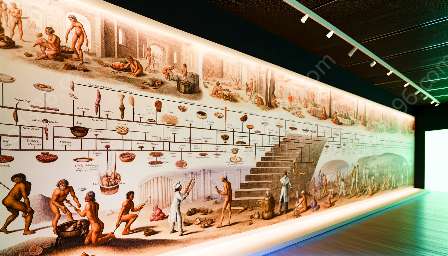Food safety principles and practices have evolved significantly over the centuries, shaping the way we prepare, handle, and consume food. This evolution has been closely intertwined with the development of culinary techniques and the rich tapestry of food culture and history.
The Historical Context
Understanding the evolution of food safety requires delving into history. Ancient civilizations, such as the Greeks and Romans, made early forays into understanding the relationship between food, health, and safety. They recognized the importance of cleanliness, proper cooking methods, and food preservation. However, it wasn't until the 19th and 20th centuries that significant advancements were made in food safety practices.
Scientific Advancements and Regulations
The 19th century saw pivotal scientific discoveries that laid the groundwork for modern food safety. Louis Pasteur's germ theory, for example, revolutionized our understanding of how microorganisms impact food safety. This led to the development of pasteurization and other methods to control the growth of harmful bacteria and pathogens in food.
As the industrial revolution progressed, food production became more centralized and mass-produced. This shift underscored the need for regulations and standards to ensure the safety of the food supply. Governments around the world began implementing measures to monitor and enforce food safety, marking a significant turning point in the evolution of food safety principles.
Technological Innovations
The 20th century brought about tremendous technological advancements that transformed food safety practices. The invention of refrigeration and cold storage allowed for better preservation of perishable foods, reducing the risk of contamination and spoilage. Additionally, the development of packaging materials and techniques helped maintain the integrity of food products throughout their journey from production to consumption.
The introduction of food processing technologies, such as canning and freezing, further expanded the shelf life of various food items. These innovations not only extended the availability of certain foods but also necessitated the establishment of safety protocols to prevent foodborne illnesses.
Integration with Culinary Techniques
Throughout history, culinary techniques have evolved to not only enhance the taste and presentation of food but also ensure its safety. Cooking methods like roasting, boiling, and fermenting were not only culinary practices but also served as mechanisms to eliminate harmful bacteria and parasites in food.
As the understanding of food safety grew, culinary professionals incorporated new approaches to minimize risks. For instance, the practice of using separate cutting boards for raw meat and produce, as well as implementing temperature control measures during cooking, became standard procedures to maintain food safety in kitchens.
Cultural Influence
Food culture and history play a significant role in the evolution of food safety principles and practices. Different cultures have developed unique methods of food preservation and preparation that are deeply rooted in tradition and heritage. As global trade expanded, so did the exchange of culinary practices and food preservation techniques, ultimately influencing the broader landscape of food safety.
Today, the multicultural nature of modern cuisine has led to a rich tapestry of food safety practices that draw from diverse traditions, enriching global culinary experiences while upholding safety standards.
Modern Challenges and Innovations
In the contemporary era, the food industry faces new challenges related to globalization, climate change, and technological advancements. These challenges have spurred innovation in food safety practices, giving rise to new techniques such as DNA-based food traceability, sensor technologies for real-time monitoring of food quality, and the implementation of blockchain for supply chain transparency.
Moreover, changing consumer preferences and dietary trends have led to the development of new food products and processing methods, necessitating the adaptation of food safety principles to address these innovations.
Conclusion
The evolution of food safety principles and practices is a remarkable journey that intertwines with culinary techniques and food culture and history. From early civilizations to the modern era, the quest for safer and more sustainable food practices has continually shaped the way we approach food. As we continue to innovate and adapt to new challenges, the evolution of food safety remains an ongoing and dynamic process.

